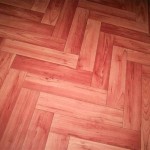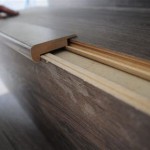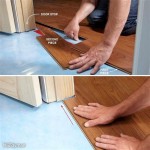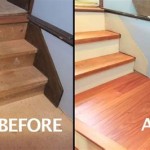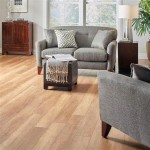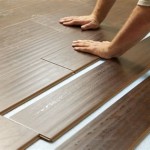Hard Surface Flooring: A Comprehensive Overview
Hard surface flooring encompasses a wide array of durable and resilient materials used to cover and finish subfloors. These flooring options are typically chosen for their resistance to wear, ease of maintenance, and aesthetic versatility. Unlike soft flooring like carpets, hard surface flooring provides a firm, unyielding surface that is suited for high-traffic areas and various interior design styles. The selection of a specific hard surface flooring type depends on factors such as budget, intended use, desired appearance, and environmental considerations.
The market for hard surface flooring is continuously evolving, with manufacturers striving to improve durability, sustainability, and design options. Technological advancements have led to innovative products that mimic the appearance of natural materials while offering enhanced performance characteristics. Understanding the different types of hard surface flooring, their advantages, disadvantages, and common applications is crucial for making informed decisions regarding flooring installations.
Types of Hard Surface Flooring
Several primary types of hard surface flooring dominate the market, each possessing unique attributes: hardwood, tile (ceramic, porcelain, and stone), laminate, and vinyl. Each of these categories include various sub-types offering a wider range of aesthetic options.
Hardwood Flooring: Hardwood flooring, known for its natural beauty and longevity, is sourced from various tree species. It is available in solid and engineered constructions. Solid hardwood consists of planks milled from a single piece of wood. Engineered hardwood comprises multiple layers of wood veneer bonded together, providing increased stability and resistance to moisture. Common hardwood species include oak, maple, cherry, walnut, and hickory, each distinguished by its grain pattern, color, and hardness. Hardwood flooring offers a warm and inviting aesthetic, enhancing the value of a property. It can be refinished multiple times, extending its lifespan. However, hardwood is susceptible to scratches, dents, and moisture damage, necessitating careful maintenance and environmental control.
Tile Flooring: Tile flooring encompasses ceramic, porcelain, and natural stone materials. Ceramic tile is manufactured from clay and fired at high temperatures, resulting in a durable and water-resistant surface. Porcelain tile, a denser and more refined type of ceramic tile, is even more resistant to water absorption and is suitable for both indoor and outdoor applications. Natural stone tiles, such as granite, marble, slate, and travertine, are quarried from the earth and possess unique veining and color variations. Tile flooring is exceptionally durable, resistant to stains, and easy to clean. It is often used in bathrooms, kitchens, and entryways due to its moisture resistance. However, tile can be cold and hard underfoot, requiring the use of area rugs or radiant floor heating for added comfort. Grout lines between tiles require periodic cleaning and sealing to prevent staining and mildew growth.
Laminate Flooring: Laminate flooring is a synthetic material composed of multiple layers, including a high-density fiberboard (HDF) core, a decorative photographic layer, and a protective wear layer. The photographic layer can simulate the appearance of wood, stone, or tile, providing a cost-effective alternative to natural materials. Laminate flooring is relatively inexpensive, easy to install, and resistant to scratches and stains. It is a popular choice for homeowners seeking an aesthetically pleasing and durable flooring option on a budget. However, laminate flooring is less resistant to moisture than tile or vinyl and cannot be refinished. It may also produce a hollow sound when walked upon, which can be mitigated by using a high-quality underlayment.
Vinyl Flooring: Vinyl flooring is a synthetic material made from polyvinyl chloride (PVC). It is available in sheet, tile, and plank formats. Vinyl flooring is highly water-resistant, durable, and easy to maintain. It is a versatile flooring option suitable for various applications, including kitchens, bathrooms, laundry rooms, and basements. Luxury vinyl plank (LVP) and luxury vinyl tile (LVT) are premium vinyl flooring options that mimic the appearance of natural materials with realistic textures and patterns. Vinyl flooring is relatively inexpensive and easy to install, making it a popular choice for both residential and commercial applications. However, some vinyl flooring options may contain volatile organic compounds (VOCs), which can affect indoor air quality. Choosing low-VOC or phthalate-free vinyl flooring options is recommended to minimize potential health risks.
Factors to Consider When Choosing Hard Surface Flooring
Selecting the appropriate hard surface flooring involves careful consideration of several pertinent factors. These include budget, desired aesthetic, anticipated traffic levels, environmental conditions, and maintenance requirements. A thorough assessment of these factors ensures a flooring solution that aligns with specific needs and preferences.
Budget: The cost of hard surface flooring varies significantly depending on the material, installation complexity, and required underlayment. Laminate and vinyl flooring are generally the most affordable options, while hardwood and natural stone tiles tend to be more expensive. Installation costs should also be factored into the overall budget. Professional installation ensures proper adherence to manufacturer specifications and minimizes the risk of future problems.
Aesthetic Preferences: The aesthetic appeal of hard surface flooring is a subjective consideration, influenced by personal tastes and interior design styles. Hardwood flooring offers a classic and timeless look, while tile flooring provides a contemporary and sophisticated appearance. Laminate and vinyl flooring offer a wide range of design options, allowing homeowners to mimic the look of natural materials at a lower cost. Considering the existing décor and desired ambiance of the room is crucial for selecting a flooring option that complements the overall design scheme.
Traffic Levels: The anticipated traffic levels in a particular area should influence the selection of hard surface flooring. High-traffic areas, such as entryways, hallways, and kitchens, require flooring materials that are highly durable and resistant to wear and tear. Hardwood flooring with a high Janka hardness rating, porcelain tile, and luxury vinyl plank are well-suited for high-traffic applications. Lower-traffic areas, such as bedrooms and living rooms, may accommodate less durable flooring options, such as softer hardwoods or thinner vinyl materials.
Environmental Conditions: Environmental conditions, such as humidity levels and temperature fluctuations, can affect the performance of hard surface flooring. Hardwood flooring is susceptible to moisture damage and may expand or contract in response to changes in humidity. Tile and vinyl flooring are more resistant to moisture and are suitable for areas with high humidity or potential water exposure. Selecting a flooring material that is appropriate for the specific environmental conditions of the room is essential for ensuring its longevity and performance.
Maintenance Requirements: The maintenance requirements of hard surface flooring vary depending on the material. Hardwood flooring requires regular cleaning and occasional refinishing to maintain its appearance and protect it from damage. Tile flooring is relatively easy to clean but requires periodic grout sealing to prevent staining and mildew growth. Laminate and vinyl flooring are generally low-maintenance, requiring only regular sweeping and occasional mopping. Considering the available time and resources for maintenance is crucial for selecting a flooring option that aligns with lifestyle and preferences.
Installation and Maintenance of Hard Surface Flooring
Proper installation is critical for ensuring the longevity and performance of hard surface flooring. The installation process varies depending on the type of flooring and the condition of the subfloor. Regular maintenance is essential for preserving the appearance and extending the lifespan of hard surface flooring.
Installation Techniques: Hardwood flooring can be installed using various methods, including nailing, gluing, or floating. Nailing is the most common method for installing solid hardwood flooring on a wood subfloor. Gluing is often used for installing engineered hardwood flooring or hardwood flooring over concrete subfloors. Floating is a method of installation where the flooring planks are interlocked without being attached to the subfloor. Tile flooring is installed using thin-set mortar, which adheres the tiles to the subfloor. Laminate and vinyl flooring can be installed using click-lock systems or by gluing them to the subfloor. Proper subfloor preparation, including leveling and cleaning, is essential for ensuring a successful installation.
Cleaning Protocols: Regular cleaning is essential for maintaining the appearance of hard surface flooring. Hardwood flooring should be swept or vacuumed regularly to remove dust and debris. Occasional damp mopping with a wood floor cleaner is recommended to remove dirt and stains. Tile flooring can be cleaned with a mild detergent and water. Grout lines should be cleaned periodically with a grout brush and a grout cleaner to remove stains and mildew. Laminate and vinyl flooring can be cleaned with a damp mop and a mild detergent. Avoid using abrasive cleaners or scouring pads, as they can scratch the surface of the flooring.
Preventative Measures: Taking preventative measures can help to prolong the lifespan of hard surface flooring. Using area rugs or mats in high-traffic areas can protect the flooring from scratches and wear. Placing felt pads under furniture legs can prevent scratches and dents. Avoiding excessive moisture exposure can prevent water damage to hardwood and laminate flooring. Regularly inspecting the flooring for signs of damage or wear can allow for timely repairs and prevent further deterioration. Following the manufacturer's recommendations for maintenance and care can help to ensure the longevity and performance of hard surface flooring.
The selection and installation of hard surface flooring represent a significant investment in a property. Careful consideration of the factors outlined above ensures a flooring solution that is both aesthetically pleasing and functionally appropriate for the intended space. The longevity and beauty of hard surface flooring are ultimately dependent on adherence to proper installation techniques and diligent maintenance practices.

What To Expect During Your Hard Surface Flooring Installation The Home Depot

Tranquility Xd 4mm Rail Tie Oak Waterproof Luxury Vinyl Plank Flooring 7 08 In Wide X 48 Long Ll

Tranquility Ultra 5mm Rustic Reclaimed Oak Waterproof Luxury Vinyl Plank Flooring 6 65 In Wide X 48 Long Ll

A Surfaces Hoffman Gray 12 Mil X 7 In 48 Waterproof Lock Luxury Vinyl Plank Flooring 23 77 Sq Ft Case Hd Lvr5012 0034 The Home Depot

Tranquility Ultra 5mm River Walk Oak Waterproof Luxury Vinyl Plank Flooring 6 In Wide X 48 Long Ll

Xl Ridge Waterproof 8 5mm Lock Luxury Vinyl Plank Flooring Builddirect

Vinyl Flooring The Home Depot

Vinyl Wood Look Flooring Ideas

Luxury Vinyl Flooring Wichita Okc Pro Installation

What Is Wpc Vinyl Flooring Discover The Future Of Inc
Related Posts

